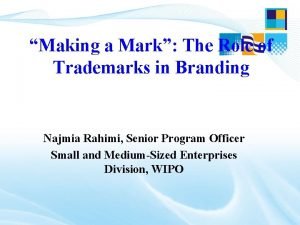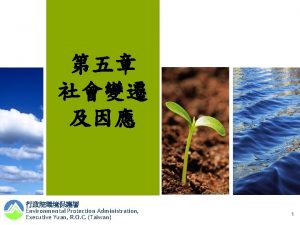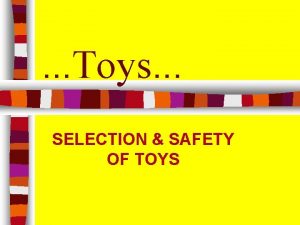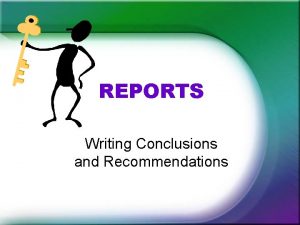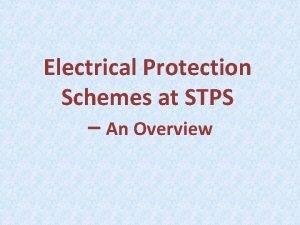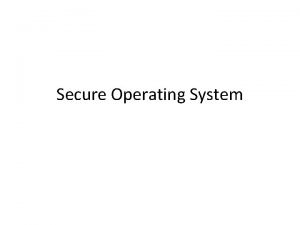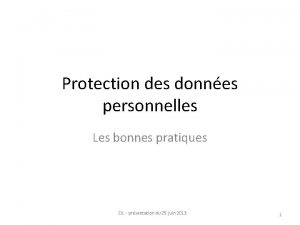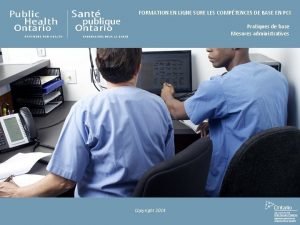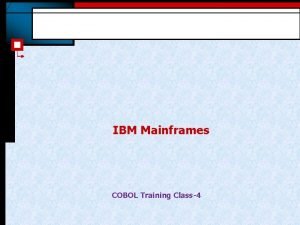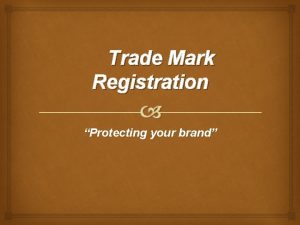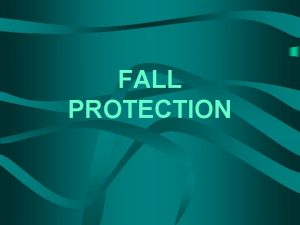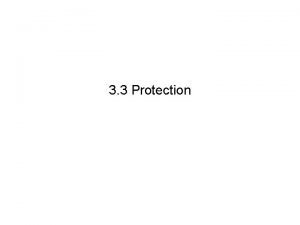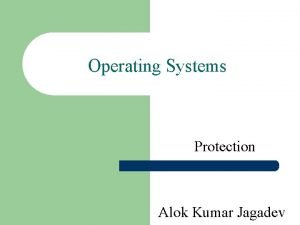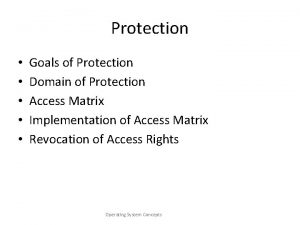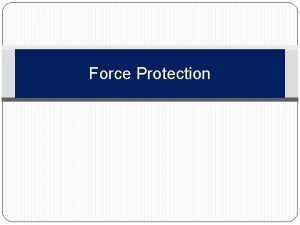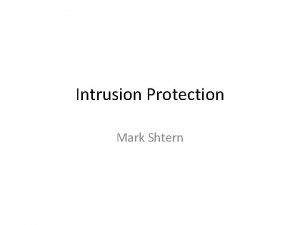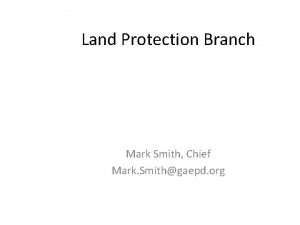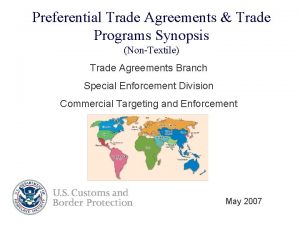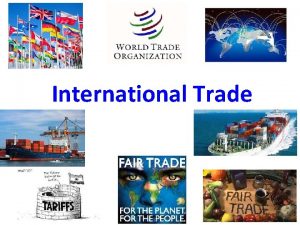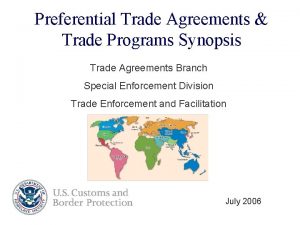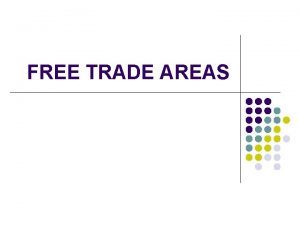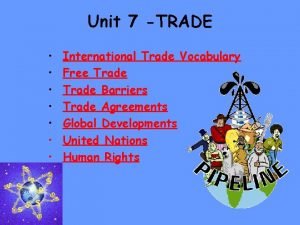Trade Mark Protection Trade mark Trade Mark Protection





















- Slides: 21

Trade Mark Protection Trade mark

Trade Mark Protection: Scope Trade Mark

Valuable Third Party Uses Comp Ads Accessory Products Resale of Second hand goods Related Services Trade Mark Competitors Describing Products Political Expressive Uses Artistic Parodic Uses

Enlarging Scope of Marks (eg to protect additional functions) Comp Ads Accessory Products Related Services Resale of Second hand goods Trade Mark Competitors Describing Products Political Expressive Uses Artistic Parodic Uses

Policy Options 1. Limit scope of protection (current TMD. art. 5; Recast TMD, art. 10) * Original Commission/MPI Proposal (limit double identity to protect origin function) 2. Create Defences Explicitly to Authorise third party uses (current, TMD, art 6; Recast TMD, art. 14)

Options (drawing from US)

New Kids on the Block: Nominative Fair Use (1) the product or service in question must be one not readily identifiable without use of the trademark; (2) only so much of the mark or marks may be used as is reasonably necessary to identify the product or service; and (3) the user must do nothing that would, in conjunction with the mark, suggest sponsorship or endorsement by the trademark holder. Note on dynamics: drawing from Smith v. Chanel (cf Interflora)

NKOTB (1) the product or service in question must be one not readily identifiable without use of the trademark; (2) only so much of the mark or marks may be used as is reasonably necessary to identify the product or service; and (3) the user must do nothing that would, in conjunction with the mark, suggest sponsorship or endorsement by the trademark holder. Lending Tree (1) use of plaintiff's mark is necessary to describe both the plaintiff's product or service and the defendant's product or service; (2) defendant uses only so much of the plaintiff's mark as is necessary to describe plaintiff's product; and (3) defendant's conduct or language reflect the true and accurate relationship between plaintiff and defendant's products or services Note on Dynamics: after prima facie case

Rogers v. Grimaldi • A Lanham Act claim will be barred by the First Amendment unless the potentially confusing title (1) has no artistic relevance to the underlying work whatsoever or (2) explicitly misleads as to the source or content of the work • E. S. S. Entertainment 2000, Inc. v. Rock Star Videos, Inc. , 547 F. 3 d 1095, 1100 (9 th Cir. 2008)

2006 Dilution Defenses (A) Any fair use, including a nominative or descriptive fair use, or facilitation of such fair use, of a famous mark by another person other than as a designation of source for the person’s own goods or services, including use in connection with— (i) advertising or promotion that permits consumers to compare goods or services; or (ii) identifying and parodying, criticizing, or commenting upon the famous mark owner or the goods or services of the famous mark owner. (B) All forms of news reporting and news commentary. (C) Any noncommercial use of a mark.

Louis Vuitton v. Haute Diggity Dog

2006 Defenses (A) Any fair use, including a nominative or descriptive fair use, or facilitation of such fair use, of a famous mark by another person other than as a designation of source for the person’s own goods or services, including use in connection with— (i) advertising or promotion that permits consumers to compare goods or services; or (ii) identifying and parodying, criticizing, or commenting upon the famous mark owner or the goods or services of the famous mark owner. (B) All forms of news reporting and news commentary. (C) Any noncommercial use of a mark.

Use as a Mark

Structuring Defences: Principles and Considerations 1. Defences are needed when the third party use would otherwise be prohibited (or is close enough that the valuable use might be chilled by threats)

Structuring Defences: Principles and Considerations 1. Defences are needed when the third party use would otherwise be prohibited (or is close enough that the valuable use might be chilled by threats) * Need to make clear that not merely applicable when not infringing anyway

Structuring Defences: Principles and Considerations 1. Defences are needed when the third party use would otherwise be prohibited (or is close enough that the valuable use might be chilled by threats)

Structuring Defences: Principles and Considerations 1. Defences are needed when the third party use would otherwise be prohibited (or is close enough that the valuable use might be chilled by threats) * Need to make clear that not merely applicable when not infringing anyway 2. How to Define Permissible Acts?

Structuring Defences: Principles and Considerations 1. Defences are needed when the third party use would otherwise be prohibited (or is close enough that the valuable use might be chilled by threats) 2. How to Define Permissible Acts? 1. Illustrations?

Options • Lists certain uses (the Parliament proposal gave a very full list; now see recital 27) • Policy concerns – Need for future-proofing and adaptation • Has to be non-exhaustive • With one open-ended option? – Extend Due Cause? – Or Recommendation, page 2. . .

Structuring Defences: Principles and Considerations 1. Defences are needed when the third party use would otherwise be prohibited (or is close enough that the valuable use might be chilled by threats) 2. How to Define Permissible Acts? 1. Illustrations. . . But not only specific illustrations, so as to ensure adaptability

Structuring Defences: Principles and Considerations 1. Defences are needed when the third party use would otherwise be prohibited (or is close enough that the valuable use might be chilled by threats) 2. How to Define Permissible Acts? 1. Illustrations. . . But not only specific illustrations, so as to ensure adaptability 2. Illustrations: also useful for certainty and clarity
 The trade in the trade-to-gdp ratio
The trade in the trade-to-gdp ratio Ted talk slave trade
Ted talk slave trade Trade diversion and trade creation
Trade diversion and trade creation Fair trade not free trade
Fair trade not free trade Trade diversion and trade creation
Trade diversion and trade creation Trade diversion and trade creation
Trade diversion and trade creation Trade diversion and trade creation
Trade diversion and trade creation Tramp and liner shipping
Tramp and liner shipping Types of trade mark
Types of trade mark Environmental protection
Environmental protection Child protection and toy safety act
Child protection and toy safety act Module sur la protection transversale
Module sur la protection transversale Example of conclusion and recommendation in report
Example of conclusion and recommendation in report Eye protection toolbox talk
Eye protection toolbox talk Union civil protection knowledge network
Union civil protection knowledge network Generator overvoltage protection
Generator overvoltage protection Mandatory protection system
Mandatory protection system Threat vectors
Threat vectors Cil protection des données
Cil protection des données Formation en ligne protection respiratoire
Formation en ligne protection respiratoire Check protection symbol in cobol
Check protection symbol in cobol Types of child protection
Types of child protection








